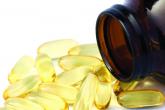Opinion

Vitamin D pearls
- Author:
- Jody Sharninghausen
- Douglas Paauw, MD
Publish date: August 28, 2020
Risk factors for worse COVID-19 outcome are also risk factors for vitamin D deficiency.
Opinion

Is carpal tunnel syndrome the tip of the iceberg?
- Author:
- Douglas Paauw, MD
Publish date: October 22, 2019
Dr. Douglas Paauw presents a case involving a patient with no clear reasons for having clinical heart failure.
News

Sinus headaches
- Author:
- Douglas Paauw, MD
Publish date: January 28, 2015
